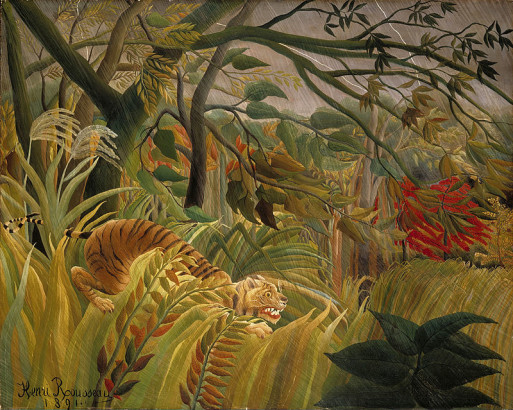 When Téa Obreht wrote “The Tiger’s Wife,” she was a 25-year-old student studying at Cornell University. Born in Yugoslavia, Obreht was heavily influenced by the Yugoslav wars in the 1990s. To escape from the conflict, her family left Yugoslavia for Egypt, then later the United States, where she has lived since she was 12 years old.
When Téa Obreht wrote “The Tiger’s Wife,” she was a 25-year-old student studying at Cornell University. Born in Yugoslavia, Obreht was heavily influenced by the Yugoslav wars in the 1990s. To escape from the conflict, her family left Yugoslavia for Egypt, then later the United States, where she has lived since she was 12 years old.
This childhood turmoil is ever-present in her debut novel, “The Tiger’s Wife.” On the surface, the novel is about a woman’s relationship to her grandfather and her grieving process after his death, but the backdrop is steeped in ominous war imagery.
The novel is set in an unnamed Balkan country, which is at war with its neighbors. The narrator, Natalia, works as a doctor, treating sick children and offering basic pediatric care to families living in border villages. Obreht jumps through multiple time frames in the book, unveiling new layers of the story with every flashback.
It’s only later that we learn of the tiger’s significance in her grandfather’s life, and this fact becomes the key to solving the mystery behind his death at the novel’s conclusion.
In the opening scene, Natalia describes a childhood visit to the zoo with her grandfather to look at the resident tiger. We learn that her grandfather is a famous doctor, and that he always carries a special copy of “The Jungle Book” with him. It’s only later that we learn of the tiger’s significance in her grandfather’s life, and this fact becomes the key to solving the mystery behind his death at the novel’s conclusion.
When you dive deeply into the themes of this book, you find not only commiseration over grief, but also the role that superstition and folk tales play in countries at war. Scattered throughout the novel, these folk tales are a sharp contrast to the narrator’s clinical logic, yet she is often forced to yield to them as she talks with her patients and uncovers the mystery behind her grandfather’s death. She learns to embrace the folk tales as a means to communicate about grief, pain and anguish, and a way to talk about the atrocities of war.

Credit: Steve Linster
After Natalia learns that her grandfather was on his way to see her the day that he died, she obsesses over the reason for his visit. Her grandfather hadn’t told her that he was coming, and Natalia begins to suspect that there was something more to her grandfather’s sudden solo trip across the Balkans than a simple wish to see her. She looks back on the stories he told her about an escaped tiger, a tiger’s human wife and a “deathless man,” and discovers secrets about her grandfather that she never realized while he was alive.
The stories Obreht relates in the book are whimsical, and it’s difficult to differentiate between the real and the imaginary. Yet that is the one purpose of the novel: to blur the lines between reality and fantasy, proving that, when families are grieving, there is merit in both. The stories that Natalia recalls her grandfather telling her seem fantastical, but every one reveals more about her grandfather’s character. As Natalia walks through these stories, she gets closer to her grandfather, finally seeing him as the person he truly was.

Credit: Henri Rousseau
The stories also serve another purpose –to illustrate the complicated relationship that doctors have to death and suffering, especially during times of war. During wartime, doctors see countless casualties, dutifully treating each patient even as they realize that more will arrive every day until the war ends. In one scene, Natalia’s grandfather reaches a crossroads with his vows as a doctor, and he’s forced to make a critical decision that alters the course of his life forever. “The Tiger’s Wife” illustrates the humanity behind doctors’ clinical detachment, aptly showcasing the impact that death and suffering have on those who are closest to it every day, and how they cope with it all.
Téa Obreht’s “The Tiger’s Wife” is a fascinating introduction to superstitions around death. At the same time, it’s a look into how it feels to lose someone who had a profound influence on one’s life. As we read the novel, we learn just how strong the bond was between Natalia and her grandfather, and why his death left her feeling hollow and desperately in need of answers. The book’s symbolism is simply Obreht’s vessel for sharing the raw emotions that all of us have likely felt at least once in our lives.

 “The Tiger’s Wife” by Téa Obreht
“The Tiger’s Wife” by Téa Obreht


 Our Annual Seven Holiday Gifts for Someone Who Is Grieving, 2024 Edition
Our Annual Seven Holiday Gifts for Someone Who Is Grieving, 2024 Edition

 “Hands Up to the Sky” by Michael Franti & Spearhead
“Hands Up to the Sky” by Michael Franti & Spearhead














